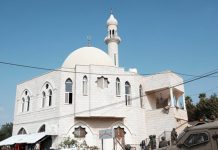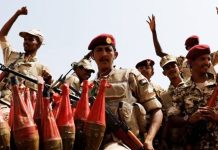Leila Giries was eight years old when she fled with her family from Ayn Karim, a Palestinian village on the outskirts of Jerusalem, during the creation of the Israeli state and violent expulsion of more than 750,000 Palestinians in 1948.
More than seven decades later, her memories remain vivid: families rushing to pack their most vital belongings, prayers as a truck full of refugees drove along a cliffside road, the searing pain of her mother using a flaming piece of cloth to cauterise an open wound when she stepped on a nail.
“We fled on foot. We had only the clothes on our back,” Giries, who now lives in a suburb of Los Angeles in the US state of California, recalled in a recent phone call with Al Jazeera. “The sky was lit up with the fire of the guns. It felt like the end of the world.”
The world of Leila’s childhood, of Ayn Karim as a vibrant Palestinian community where people greeted her in the street and children played among rows of almond trees, was shattered alongside Palestinian society in the violence of 1948.
For Palestinians, that year represents the beginning of decades of ongoing violence and dispossession, referred to simply as Al-Nakba – the catastrophe.
Source: cnn.com









